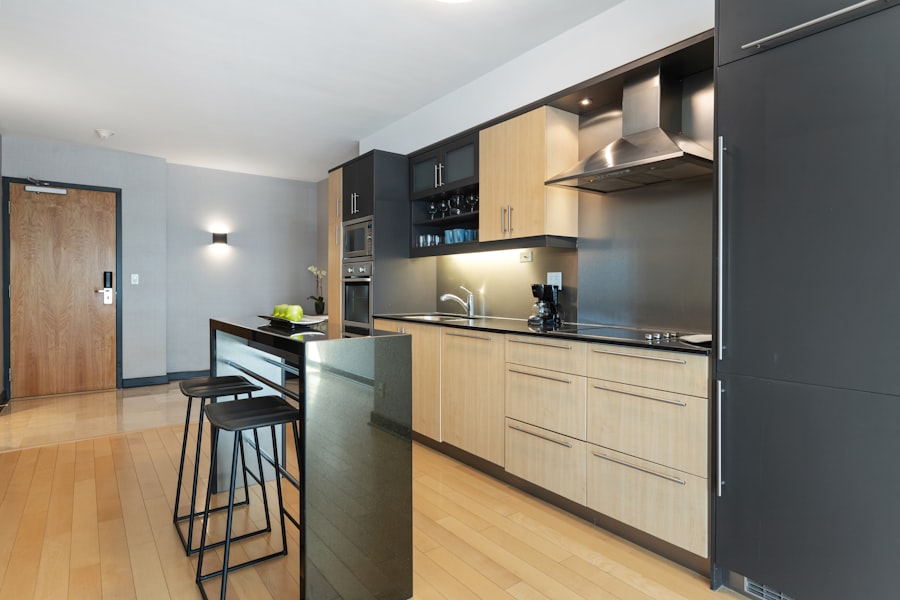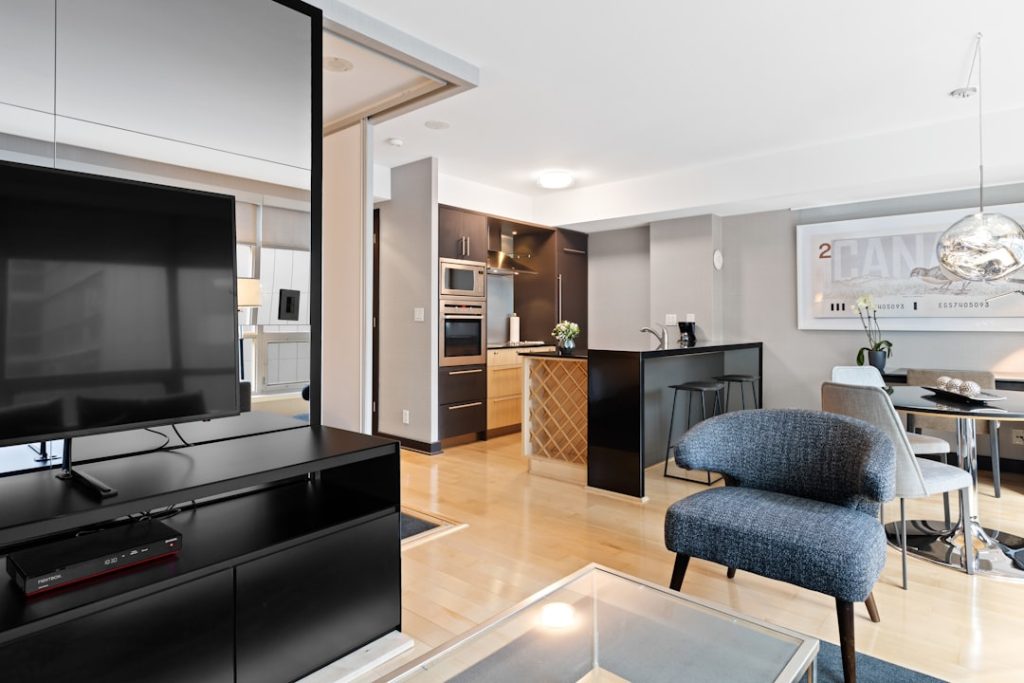When embarking on the journey of designing custom cabinets, the first step is to thoroughly assess your storage needs. This involves a comprehensive evaluation of the items you intend to store, their dimensions, and how frequently you access them. For instance, in a kitchen setting, you might need to consider not only the standard cookware and utensils but also specialized appliances like blenders or food processors that require dedicated space.
Similarly, in a home office, you may need to account for files, books, and electronic devices, each with its own spatial requirements. By categorizing your items based on their size and frequency of use, you can create a more organized and efficient storage solution. Moreover, understanding your storage needs goes beyond just the physical dimensions of your items.
It also encompasses your lifestyle and how you interact with your space. For example, if you frequently entertain guests, you might prioritize easy access to serving dishes and glassware in your kitchen cabinets. Alternatively, if you have children, you may want to design lower cabinets that are easily accessible for them while ensuring that hazardous materials are stored out of reach.
By taking into account both the practical aspects of storage and the nuances of your daily life, you can create a cabinet system that not only meets your needs but also enhances your overall living experience.
Key Takeaways
- Assess your storage requirements carefully to ensure functionality and efficiency.
- Select durable and suitable materials that match your usage and style preferences.
- Plan the cabinet layout to maximize space and accessibility.
- Personalize cabinet features to meet your specific needs and enhance usability.
- Collaborate with a professional and budget wisely to achieve quality custom cabinets.
Choosing the Right Materials
The selection of materials is a critical aspect of custom cabinet design that can significantly influence both functionality and aesthetics. Wood is often the go-to choice for many homeowners due to its durability and timeless appeal. Hardwoods such as oak, maple, and cherry are popular for their strength and resistance to wear.
Each type of wood has its unique grain patterns and colors, allowing for a wide range of finishes that can complement any interior design style. For instance, a natural finish on oak can bring warmth to a rustic kitchen, while a sleek, painted finish on maple can enhance a modern aesthetic. In addition to traditional wood options, there are also engineered materials like plywood and MDF (medium-density fiberboard) that offer excellent stability and versatility.
Plywood is particularly favored for its resistance to warping and splitting, making it an ideal choice for cabinet boxes. On the other hand, MDF is often used for painted finishes due to its smooth surface that allows for a flawless application of paint. When selecting materials, it’s essential to consider not only the visual appeal but also the durability and maintenance requirements of each option.
For example, while high-gloss finishes can create a striking look, they may require more frequent cleaning to maintain their shine compared to matte finishes.
Designing the Layout

The layout of your custom cabinets plays a pivotal role in maximizing both storage efficiency and accessibility. A well-thought-out design can transform a cluttered space into an organized haven. Start by sketching out a rough floor plan of the area where the cabinets will be installed.
Consider the flow of movement within the space; for instance, in a kitchen, it’s crucial to ensure that cabinet placement does not obstruct pathways between the sink, stove, and refrigerator. This concept is often referred to as the “kitchen work triangle,” which emphasizes the importance of keeping these three key areas within easy reach. In addition to considering traffic flow, think about how different cabinet configurations can enhance functionality.
For example, incorporating pull-out shelves or lazy Susans can make it easier to access items stored in deep cabinets. Vertical dividers can be used to store baking sheets or cutting boards upright, while drawer organizers can help keep utensils sorted and easy to find. By integrating these thoughtful design elements into your layout, you can create a cabinet system that not only looks great but also works seamlessly with your daily routines.
Customizing Cabinet Features
| Feature | Description | Customization Options | Typical Lead Time (Days) | Impact on Cost |
|---|---|---|---|---|
| Material | Type of wood or composite used for cabinet construction | Oak, Maple, Cherry, MDF, Plywood | 7-14 | Low to High |
| Finish | Surface treatment applied to the cabinet | Paint, Stain, Lacquer, Veneer | 5-10 | Medium |
| Door Style | Design and profile of cabinet doors | Shaker, Raised Panel, Flat Panel, Glass Inserts | 7-12 | Medium |
| Hardware | Handles, knobs, and hinges used on cabinets | Brushed Nickel, Chrome, Bronze, Custom Designs | 3-7 | Low to Medium |
| Interior Accessories | Additional features inside cabinets for organization | Pull-out Shelves, Lazy Susans, Drawer Dividers | 5-10 | Medium |
| Size & Dimensions | Custom sizing to fit specific spaces | Height, Width, Depth adjustments | 7-14 | Medium to High |
| Lighting | Integrated lighting options for cabinets | LED Strips, Puck Lights, Motion Sensors | 5-8 | Medium |
One of the most appealing aspects of custom cabinets is the ability to tailor features to suit your specific needs and preferences. This customization can range from practical elements like adjustable shelving and built-in lighting to more specialized features such as wine racks or pull-out spice drawers. Adjustable shelving is particularly beneficial as it allows you to modify the height of shelves based on changing storage needs over time.
This flexibility ensures that your cabinets remain functional as your collection of items evolves. Another popular customization option is the inclusion of specialized storage solutions. For instance, if you’re an avid cook or baker, you might consider adding a pull-out pantry that provides easy access to dry goods and spices without having to rummage through deep shelves.
Similarly, if you have a collection of cookbooks or decorative items, incorporating glass-front cabinets can showcase these treasures while keeping them protected from dust. By thoughtfully customizing these features, you can create cabinets that not only meet your storage needs but also reflect your personal style and interests.
Incorporating Style and Aesthetics
The aesthetic appeal of custom cabinets is just as important as their functionality. The style you choose should harmonize with the overall design theme of your home while also reflecting your personal taste. Whether you prefer a classic look with ornate details or a minimalist approach with clean lines, there are countless options available to suit every preference.
For example, shaker-style cabinets with their simple paneling are ideal for those who appreciate a timeless aesthetic, while flat-panel cabinets can lend a contemporary feel to modern spaces. Color selection is another critical aspect of incorporating style into your cabinets. Neutral tones like white or gray can create a fresh and airy atmosphere, while darker hues such as navy or charcoal can add depth and sophistication.
Additionally, consider how hardware choices—such as knobs and pulls—can enhance the overall look of your cabinets. Brushed nickel or matte black finishes can provide a modern touch, while antique brass or oil-rubbed bronze can evoke a sense of vintage charm. By carefully considering these aesthetic elements, you can ensure that your custom cabinets not only serve their purpose but also elevate the visual appeal of your space.
Working with a Professional Cabinet Maker

Collaborating with a professional cabinet maker is an essential step in bringing your custom cabinet vision to life. An experienced cabinet maker possesses the skills and knowledge necessary to translate your ideas into functional designs while ensuring high-quality craftsmanship. When selecting a cabinet maker, it’s important to review their portfolio and ask for references from previous clients.
This will give you insight into their style and capabilities, helping you determine if they align with your vision. During the design process, effective communication with your cabinet maker is crucial. Be prepared to discuss your storage needs, preferred materials, and aesthetic preferences in detail.
A skilled cabinet maker will listen attentively to your requirements and offer valuable suggestions based on their expertise. They may propose innovative solutions or adjustments that enhance both functionality and design. Additionally, they will guide you through the selection of finishes and hardware options, ensuring that every detail aligns with your overall vision.
Budgeting for Custom Cabinets
Budgeting for custom cabinets requires careful planning and consideration of various factors that influence costs. The price of custom cabinetry can vary significantly based on materials used, complexity of design, and labor involved in construction and installation. It’s essential to establish a realistic budget early in the process so that you can make informed decisions without compromising on quality or functionality.
To create an effective budget, start by researching average costs for different materials and styles in your area. This will give you a baseline understanding of what to expect financially. Additionally, consider setting aside a contingency fund for unexpected expenses that may arise during the project.
Custom cabinetry often involves intricate details that may require adjustments or additional materials as work progresses. By being financially prepared for these possibilities, you can ensure that your project stays on track without unnecessary stress.
Maintenance and Care for Custom Cabinets
Once your custom cabinets are installed, proper maintenance is key to preserving their beauty and functionality over time. Regular cleaning is essential; however, it’s important to use appropriate cleaning products that won’t damage the finish or material of your cabinets. For wooden cabinets, a gentle solution of warm water and mild soap is often sufficient for routine cleaning.
Avoid harsh chemicals or abrasive cleaners that could strip away protective finishes or scratch surfaces. In addition to regular cleaning, periodic inspections are advisable to identify any signs of wear or damage early on. Check for loose hinges or hardware that may need tightening and inspect for any signs of moisture damage or warping—especially in areas like kitchens or bathrooms where humidity levels fluctuate significantly.
If you notice any issues, addressing them promptly can prevent more extensive damage down the line. By committing to regular maintenance practices, you can ensure that your custom cabinets remain functional and visually appealing for years to come.



